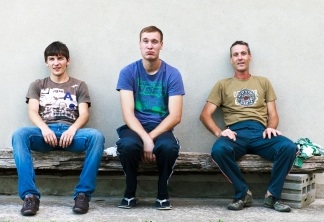Here are some more ways to appreciate your awareness of body language in yourself and others, including children and active pets. My earlier blog, “Are You A Mover?” was printed on 12/26/2010, and asked you to notice the difference between a person who is “headstrong” or has “her head in the clouds.” Take a look at some more basic movement vocabulary that speaks constantly to all of us, whether we are aware of it or not.
Richard Burton once described his awe at meeting Picasso who, he said, had the extraordinary stillness of a lizard. This is an interesting perception, since a body that is motionless receives particularly clear and vivid visual impressions. Another example from Alexander Lowen’s classic “The Language of the Body” describes a patient whose shoulders were disproportionately broad. As a child, this patient wanted to comfort his mother whose attitude toward children involved much self-pity and suffering. The little boy was sympathetic, but also afraid and angry. Lowen pointed out that shoulders also rise out of fear and defiance. The position and appearance of the shoulders carried the patient’s whole family history.
If you have the opportunity to go to a play, you may be able to observe how the movement of the actors evolves from their inner feelings about who they are, where they are, and what they are doing there. Here is how a director describes his approach to a staged version of Tolstoy’s famous short story, “The Death of Ivan Ilych.”
Ivan is an official who has achieved a certain status. He is pompous, vain, smug, but also retains a hint of childlike excitement about his success in life. His movement in the beginning of the piece consisted of short steps, chest out, nose up – somewhat like a penguin. When he became excited he speeded up, but his head came down to earth and his eyes took in everything – a combination of a bird and an eager child.
His wife felt dissatisfied with him and her life but wanted to keep up appearances. Her movement was solid and driving, feet and trunk well into the ground, and whenever she was around her husband, she fussed with her hands. Perhaps she arranged the doily on the armchair in which he was reading or brushed crumbs from his place at the table as he ate, or arranged his collar when he kissed her good bye in the morning. This behavior was purposefully ambivalent. It looked as if she was the perfect wife, but in reality she was hostile and critical in her actions. As Ivan became more and more ill, the childlike openness increased. The rituals and formalities of his way of life became empty and meaningless in the face of impending death. At the same time, his wife’s superficial caretaking took on a new meaning, revealing to the audience the hypocrisy and sadness of their interaction.
I hope this inspires you to take a closer look at the body language around you. You can start with the three young people above in a photo called “Unemployment.” What’s going on? Let me know! Reach me at liseand@aol.com
© 2012 Copyright: Lise Liepmann All rights reserved
Image: Unemployment by graur razvan ionut / FreeDigitalPhotos.net

